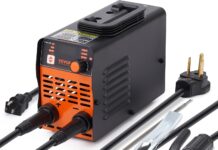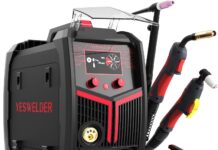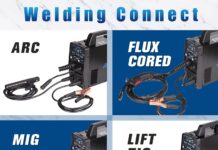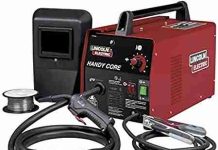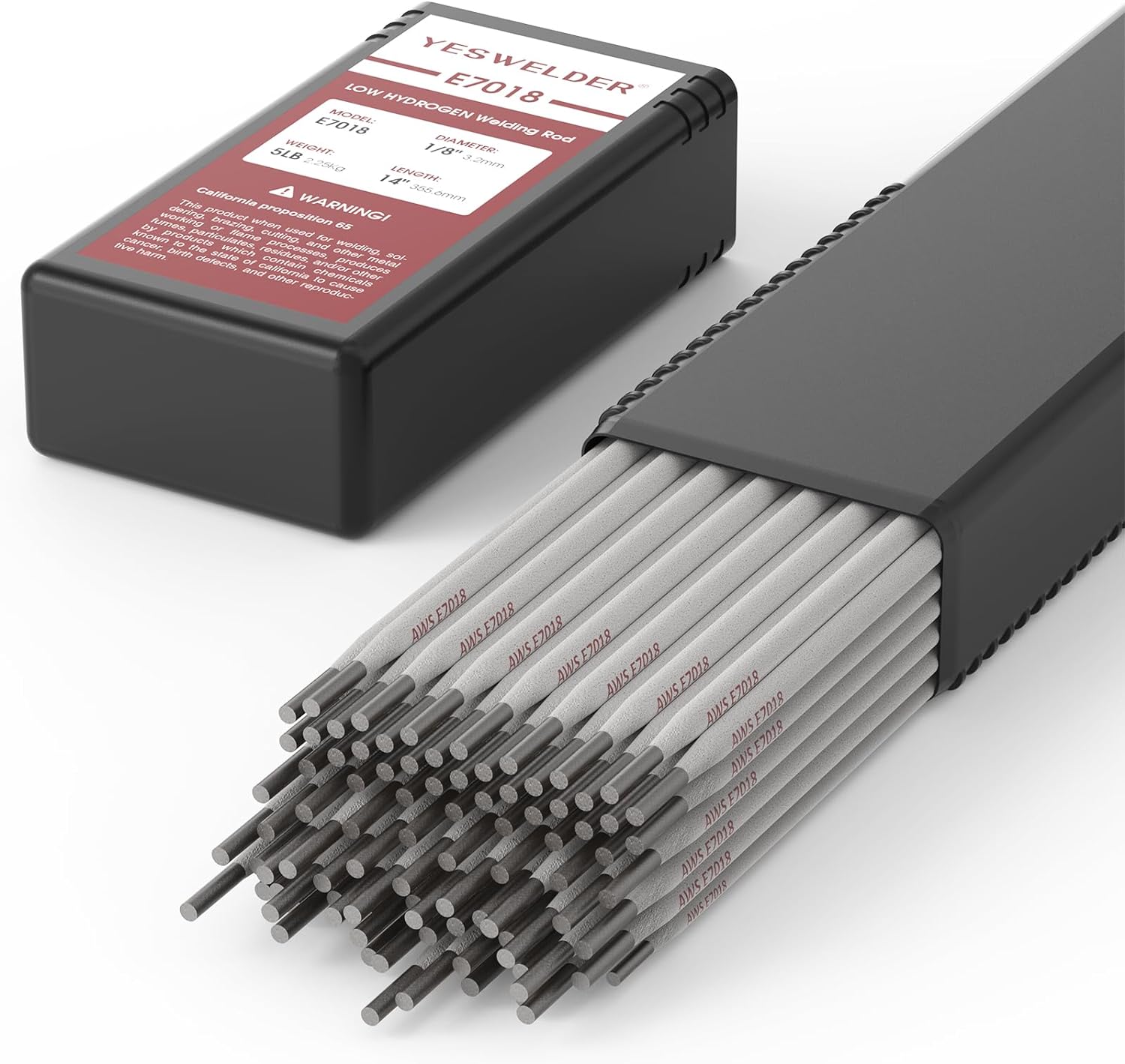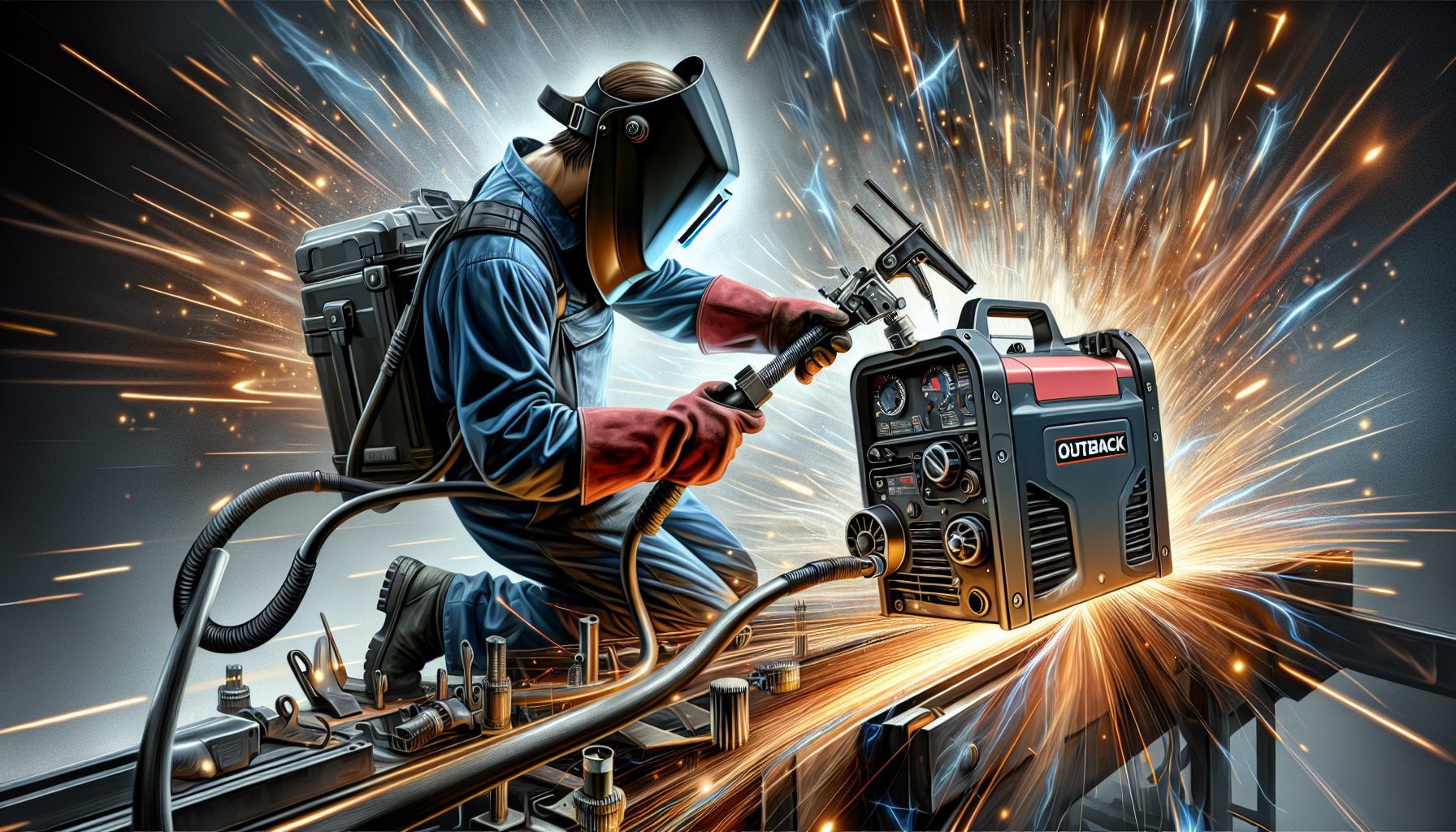TIG welding, also known as Gas Tungsten Arc Welding (GTAW), is a versatile welding process that utilizes a non-consumable tungsten electrode to create a strong and precise bond between metals. This technique is commonly used in industries such as aerospace, automotive, and manufacturing where precision and aesthetic appearance are crucial. TIG welding is highly preferred for its ability to weld a wide range of materials, including stainless steel, aluminum, and copper, making it an essential skill for welders seeking versatility and quality in their work.
What is TIG Welding?
Definition of TIG Welding
TIG welding, also known as Gas Tungsten Arc Welding (GTAW), is a process that utilizes a non-consumable tungsten electrode to create an electric arc for welding. The arc is formed between the electrode and the workpiece, resulting in a high-quality weld. TIG welding is characterized by its precision and versatility, making it suitable for a wide range of applications.
TIG Welding Process
The TIG welding process involves several key steps. First, the workpiece and the tungsten electrode are prepared. The workpiece is cleaned and properly positioned, while the tungsten electrode is sharpened and inserted into the welding torch. Next, a shielding gas, typically argon or helium, is supplied to protect the weld area from atmospheric contamination. The welding torch is then positioned, and an arc is initiated by striking the tungsten electrode against the workpiece. Finally, the weld pool is formed as the electrode is slowly and steadily fed into the joint, ensuring a consistent and high-quality weld.
Advantages of TIG Welding
TIG welding offers numerous advantages that make it a preferred choice in various industries. One of the primary benefits is the high-quality welds it produces. With precise control over the heat input, arc length, and welding speed, TIG welding allows for exceptional weld integrity and aesthetics. Additionally, TIG welding can be used on a wide range of materials, including stainless steel, aluminum, titanium, and other exotic metals. Its versatility is further enhanced by the ability to weld both thick and thin materials effectively. Furthermore, TIG welding produces minimal spatter, reducing the need for post-weld clean-up. Finally, the TIG welding process provides excellent control over the weld pool, enabling the welder to create intricate and precise weld joints.
When is TIG Welding Used?
Applications of TIG Welding
TIG welding finds applications in various industries and sectors due to its versatility and high-quality results. It is commonly used in the aerospace industry for welding critical components like aircraft frames, engine parts, and exhaust systems. The automotive industry also relies on TIG welding for fabricating exhaust systems, fuel lines, and body panels. In the manufacturing sector, TIG welding is utilized for producing precision components such as medical equipment, pressure vessels, and intricate metal artwork. Additionally, TIG welding is favored in the food and beverage industry due to its ability to produce clean and sanitary welds on stainless steel equipment. This process is also used in the construction industry, particularly for welding architectural metalwork such as handrails and ornate metal structures.
Materials Suitable for TIG Welding
TIG welding is compatible with a wide range of metals and alloys, making it a suitable choice for various applications. It is commonly used for welding stainless steel, thanks to its ability to maintain the metal’s corrosion resistance and aesthetic appeal. TIG welding is also well-suited for aluminum welding, as it enables the welder to achieve excellent heat control and avoid distortion. Additionally, TIG welding can be used for welding titanium, copper, brass, and other non-ferrous metals. The process’s capability to weld dissimilar metals further expands its applications, allowing for the creation of composite structures and specialized material combinations.
Advantages of Using TIG Welding in Specific Applications
In specific applications, TIG welding offers distinct advantages over other welding processes. In the aerospace industry, TIG welding’s precision and ability to weld thin sheets make it ideal for joining delicate and lightweight aircraft components. Similarly, in the automotive industry, TIG welding’s clean, spatter-free welds contribute to the overall aesthetics of high-end vehicles. Its ability to weld stainless steel without compromising its corrosion resistance makes it a popular choice in the food and beverage industry, ensuring the integrity and cleanliness of essential equipment. In artistic and architectural applications, TIG welding’s control over the weld pool enables welders to create intricate designs and ornate structures with high precision.
TIG Welding Equipment
TIG Welder
The TIG welder, also known as the GTAW power source, is the primary equipment used in TIG welding. It generates the necessary electrical current to establish and maintain the welding arc. TIG welders come in various sizes and power capacities, allowing for flexibility in different welding applications.
Tungsten Electrode
The tungsten electrode is a non-consumable electrode that plays a crucial role in TIG welding. It is made from pure tungsten or a tungsten alloy and is responsible for generating the electric arc. The choice of tungsten electrode depends on the type of material being welded and the application requirements.
Gas Supply
A reliable gas supply is essential for TIG welding. Shielding gases, typically argon or helium, are used to protect the weld pool and electrode from oxidation and contamination. These inert gases create an atmosphere that ensures clean, high-quality welds.
Filler Rod
In TIG welding, a filler rod may be used to add additional material to the joint, reinforcing the weld and ensuring proper fusion. The choice of filler rod depends on the base material being welded and the desired mechanical properties of the weld.
Welding Torch
The welding torch, also known as the TIG torch or GTAW torch, is held by the welder and provides the necessary control over the welding process. It houses the tungsten electrode, gas nozzles, and controls for adjusting the welding parameters.
Welding Table
A welding table provides a stable and safe work surface during TIG welding. It is typically made from steel and features various fixtures and clamps to securely hold the workpiece in place. A level and well-prepared welding table help ensure accurate and consistent welds.
Preparing for TIG Welding
Safety Precautions
Before starting any welding process, including TIG welding, it is crucial to prioritize safety. Proper personal protective equipment (PPE), such as welding helmets, gloves, and flame-resistant clothing, should be worn to protect against burns, sparks, and UV radiation. Adequate ventilation in the workspace is essential to prevent exposure to welding fumes and gases. Additionally, fire safety measures, including fire extinguishers and proper grounding, should be implemented to minimize potential risks.
Surface Preparation
To achieve high-quality welds, proper surface preparation is vital in TIG welding. The workpiece must be thoroughly cleaned to remove contaminants, such as dirt, oil, and rust, that could affect the weld integrity. Surface cleaning methods may include wire brushing, grinding, or solvent cleaning, depending on the material and condition of the workpiece.
Electrode Selection
Choosing the appropriate tungsten electrode is essential for a successful TIG welding process. The electrode type, diameter, and composition should be selected based on the type of material being welded and the welding parameters. Pure tungsten electrodes are typically used for aluminum welding, while thoriated or lanthanated electrodes are commonly used for steel and stainless steel applications.
Gas Selection
The choice of shielding gas is determined by the materials being welded and the desired weld properties. Argon is the most commonly used shielding gas in TIG welding due to its inertness and ability to provide sufficient protection. Helium, on the other hand, is often used for applications requiring higher heat input or deeper weld penetration.
TIG Welding Techniques
Torch Position
Proper torch positioning is crucial to achieve weld quality and control. The torch should be held at the correct angle and distance from the workpiece to ensure adequate shielding gas coverage and weld pool control. Practice and experience help welders develop the necessary skills to maintain consistent torch positions during the welding process.
Arc Length
The arc length, or the distance between the tungsten electrode and the workpiece, significantly impacts the TIG welding process. A consistent, optimal arc length must be maintained to ensure stable arc ignition, proper heat input, and control over the weld pool. Adjustments to the electrode stick-out or torch-to-work distance may be required based on the welding parameters and joint configuration.
Travel Speed
Controlling the travel speed is essential for achieving quality welds in TIG welding. The speed at which the welding torch is moved along the joint influences the heat input and fusion characteristics. Welding too fast can result in insufficient penetration, while welding too slowly can lead to excessive heat input and distortion. Finding the optimal travel speed requires practice and a thorough understanding of the welding parameters.
Weld Pool Control
TIG welding allows for precise control over the weld pool, making it possible to create clean, defect-free welds. By manipulating the heat input, movement of the welding torch, and addition of filler rod, welders can control the size, shape, and fusion characteristics of the weld pool. Proper weld pool control is essential for achieving the desired weld strength and appearance.
Common TIG Welding Problems
Weld Porosity
Weld porosity, or the presence of gas pockets in the weld, can weaken the weld joint and compromise its integrity. This issue may arise from inadequate shielding gas coverage, improper gas flow rate, contaminated filler rod, or improper welding technique. Proper gas shielding and careful handling of filler rod can help minimize the occurrence of weld porosity.
Lack of Fusion
Lack of fusion occurs when the weld metal fails to properly fuse with the base material or adjacent weld passes. This may result from insufficient heat input, improper torch angle, or excessive travel speed. Addressing the root cause of the lack of fusion, such as increasing heat input or adjusting torch position, can help achieve proper fusion and prevent potential weld defects.
Tungsten Contamination
Contamination of the tungsten electrode during TIG welding can lead to weld defects and reduced electrode life. Common sources of contamination include improper handling, contact with the molten weld pool, and insufficient gas shielding. Regularly sharpening the tungsten electrode, using proper welding techniques, and maintaining adequate gas coverage can help minimize tungsten contamination.
Hot Cracking
Hot cracking, also known as solidification cracking, is a type of weld defect characterized by cracks forming in the welded material during solidification. It may occur due to the high thermal stresses generated during TIG welding, especially in materials prone to cracking, such as certain stainless steels or aluminum alloys. Adjusting welding parameters, preheating the workpiece, and utilizing filler materials with better crack resistance can help prevent hot cracking.
Tips for Successful TIG Welding
Practice Proper Tungsten Sharpening
Properly sharpening the tungsten electrode is essential for optimal arc performance and weld quality. The electrode should be sharpened to a point or truncated cone shape, depending on the welding application. Regularly inspecting and sharpening the electrode helps maintain arc stability and minimizes tungsten contamination.
Maintain a Clean Work Area
Keeping the work area clean and organized contributes to a safe and efficient TIG welding process. Removing unnecessary clutter, storing welding equipment properly, and maintaining a clean workspace helps prevent accidents, reduces the risk of contamination, and ensures easy access to tools and materials.
Control the Welding Amperage
Proper control of the welding amperage is critical in TIG welding to achieve the desired weld characteristics. Adjusting the amperage settings based on the material thickness, joint configuration, and welding parameters allows for precise heat control and helps avoid potential weld defects. Monitoring and maintaining a consistent welding amperage during the welding process contribute to consistent and high-quality welds.
Avoid Overheating the Workpiece
Overheating the workpiece can lead to distortion, loss of mechanical properties, and reduced weld integrity. Proper heat management, including controlling the welding amperage, travel speed, and interpass temperature, helps prevent overheating and ensures that the workpiece remains within acceptable temperature limits. Utilizing preheating or post-weld heat treatment techniques may be necessary for specific materials or joint designs.
Comparison with Other Welding Processes
TIG Welding vs. MIG Welding
TIG welding and MIG (Metal Inert Gas) welding are both widely used welding processes, but they differ in terms of applications and capabilities. TIG welding is known for its precision and ability to produce high-quality welds but requires more skill and control. It is suitable for welding thinner materials and is commonly used in applications where aesthetics and weld quality are critical. On the other hand, MIG welding is a faster and more versatile process, suitable for welding thicker materials and large-scale productions. MIG welding is often favored for its ease of use and productivity, although it may not provide the same level of control and precision as TIG welding.
TIG Welding vs. Stick Welding
TIG welding and Stick welding, also known as Shielded Metal Arc Welding (SMAW), are two popular welding processes with distinct characteristics. TIG welding offers precise control, excellent weld aesthetics, and the ability to weld a wide range of materials. It is commonly used in applications requiring high-quality welds, such as aerospace, automotive, and artistic applications. Stick welding, on the other hand, is known for its simplicity and versatility. It can be used for welding various materials, including thick steel, and is often preferred in outdoor or remote locations where power sources may be limited. Stick welding may not offer the same level of control and precision as TIG welding but remains a reliable and accessible option in many situations.
TIG Welding Certifications
Types of TIG Welding Certifications
Obtaining TIG welding certifications can be beneficial for welders looking to advance their careers and showcase their expertise. Various organizations and standards exist, offering certifications based on specific welding codes and requirements. Common TIG welding certifications include those issued by the American Welding Society (AWS), such as the Certified Welder (CW) and Certified Welding Inspector (CWI) certifications. Additionally, industry-specific certifications may be required for certain applications, such as aviation or nuclear welding.
Benefits of TIG Welding Certifications
TIG welding certifications provide several advantages for welders. They validate the welder’s skills and competence, increasing their employability and market value. Certified welders often have access to better job opportunities and higher-paying positions. TIG welding certifications also demonstrate a commitment to quality and safety standards, instilling confidence in clients and employers. Additionally, certified welders receive ongoing training and education, staying updated on the latest advancements and techniques in the field.
Future Developments in TIG Welding
Automation and Robotics in TIG Welding
Automation and robotics are increasingly being integrated into TIG welding processes, improving efficiency, repeatability, and productivity. Robotic TIG welding systems offer enhanced precision and control, reducing the reliance on human operators. These systems can handle complex welds with minimal human intervention, leading to consistent quality and increased throughput. The integration of advanced sensors and artificial intelligence further enhances process monitoring and optimization, resulting in improved weld quality and reduced resource consumption.
Advancements in TIG Welding Equipment
Continued advancements in TIG welding equipment contribute to the growing capabilities and efficiency of the process. TIG welders are becoming more compact, portable, and user-friendly, enabling greater accessibility and versatility. Improved power sources offer enhanced control over welding parameters, making it easier for welders to achieve the desired weld characteristics. Moreover, advancements in gas delivery systems and automatic gas flow control contribute to better gas coverage and reduce the risk of weld defects.
Improved Welding Techniques
Research and development efforts continue to explore and refine TIG welding techniques, allowing for further improvements in weld quality and efficiency. Advances in arc control technology enable finer adjustments in the welding parameters, resulting in enhanced process stability and control. The development of new filler materials and alloy compositions expands the range of materials that can be effectively welded using TIG. Additionally, non-contact arc starting techniques, such as high-frequency or touchless ignition, minimize electrode contamination and improve arc starting reliability.
In conclusion, TIG welding, or Gas Tungsten Arc Welding (GTAW), is a versatile and precise welding process that offers numerous advantages in various applications. From aerospace to automotive, construction to manufacturing, TIG welding provides high-quality welds on a wide range of materials. With proper equipment, techniques, and certifications, TIG welding can consistently produce strong and aesthetically pleasing welds. As technology continues to advance, TIG welding is poised to benefit from automation, improved equipment, and refined techniques, further enhancing its capabilities and expanding its applications in the future.





